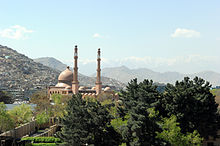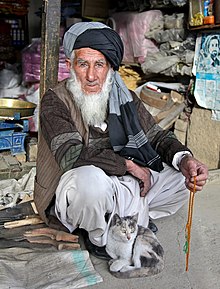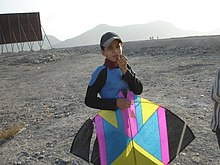
Afghanistan, officially the Islamic Emirate of Afghanistan, is a landlocked country located at the crossroads of Central Asia and South Asia. Referred to as the Heart of Asia, it is bordered by Pakistan to the east and south, Iran to the west, Turkmenistan to the northwest, Uzbekistan to the north, Tajikistan to the northeast, and China to the northeast and east. Occupying 652,864 square kilometers (252,072 sq mi) of land, the country is predominantly mountainous with plains in the north and the southwest, which are separated by the Hindu Kush mountain range. Kabul is the country's largest city and serves as its capital. According to the World Population review, as of 2023, Afghanistan's population is 43 million. The National Statistics Information Authority of Afghanistan estimated the population to be 32.9 million as of 2020.

Afghans or Afghan people are nationals or citizens of Afghanistan, or people with ancestry from there. Afghanistan is made up of various ethnicities, of which Pashtuns, Tajiks, Hazaras and Uzbeks are the largest. The three main languages spoken by Afghans are Dari, Pashto and Uzbek many Afghans are bilingual speaking both Dari and Pashto.
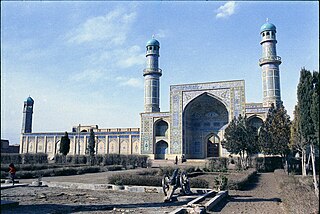
Herāt is an oasis city and the third-largest city in Afghanistan. In 2020, it had an estimated population of 574,276, and serves as the capital of Herat Province, situated south of the Paropamisus Mountains in the fertile valley of the Hari River in the western part of the country. An ancient civilization on the Silk Road between West, Central and South Asia, it serves as a regional hub in the country's west.

Dari, also known as Dari Persian, is the variety of the Persian language spoken in Afghanistan. Dari is the Afghan government's official term for the Persian language; it is known as Afghan Persian or Eastern Persian in many Western sources. The decision to rename the local variety of Persian in 1964 was more political than linguistic to support an Afghan state narrative. Apart from a few basics of vocabulary, there is little difference between formal written Persian of Afghanistan and Iran; the languages are mutually intelligible. Dari is the official language for 35 million Afghans in Afghanistan and it serves as the lingua franca for interethnic communications in Afghanistan.

The population of Afghanistan is around 41 million as of 2023. The nation is composed of a multi-ethnic and multilingual society, reflecting its location astride historic trade and invasion routes between Central Asia, South Asia, and Western Asia. Ethnic groups in the country include Pashtun, Tajik, Hazara, Uzbek, as well as smaller groups such as Baloch, Nuristani, Turkmen, Aimaq, Mongol and some others which are less known. Together they make up the contemporary Afghan people.

Pashto is an Eastern Iranian language in the Indo-European language family, natively spoken in northwestern Pakistan, southern and eastern Afghanistan, and some isolated pockets of far eastern Iran near the Afghan border. It has official status in Afghanistan and the Pakistani province of Khyber Pakhtunkhwa. It is known in historical Persian literature as Afghani.

The music of Afghanistan comprises many varieties of classical music, folk music, and modern popular music. Afghanistan has a rich musical heritage and features a mix of Persian melodies, Indian compositional principles, and sounds from ethnic groups such as the Pashtuns, Tajiks and Hazaras. Instruments used range from Indian tablas to long-necked lutes. Afghanistan's classical music is closely related to Hindustani classical music while sourcing much of its lyrics directly from classical Persian poetry such as Mawlana Balkhi (Rumi) and the Iranian tradition indigenous to central Asia. Lyrics throughout most of Afghanistan are typically in Dari (Persian) and Pashto. The multi-ethnic city of Kabul has long been the regional cultural capital, but outsiders have tended to focus on the city of Herat, which is home to traditions more closely related to Iranian music than in the rest of the country.

Fārsīwān is a contemporary designation for Persian speakers in Afghanistan and its diaspora elsewhere. More specifically, it was originally used to refer to a distinct group of farmers in Afghanistan and urban dwellers. In Afghanistan, original Farsiwans are found predominantly in Herat and Farah provinces. They are roughly the same as the Persians of eastern Iran. The term excludes the Hazāra and Aymāq tribes, who also speak dialects of Persian.

Chaghcharān, also called Firozkoh, is a town and district in central Afghanistan, which serves as the capital of Ghor Province. It is located on the southern side of the Hari River, at an altitude of 2,230 m above sea level. Chaghcharan is linked by a 380 kilometres (240 mi) long highway with Herat to the west, and a 450 kilometres (280 mi) long highway with Kabul to the east. The town has an airport called Chaghcharan Airport.

Afghanistan is a linguistically diverse nation, with upwards of 40 distinct languages. However, Dari and Pashto are two of the most prominent languages in the country, and have shared official status under various governments of Afghanistan. Dari, as a shared language between multiple ethnic groups in the country, has served as a historical lingua franca between different linguistic groups in the region and is the most widely understood language in the country. Pashto is also widely spoken in the region; but the language does not have a diverse multi-ethnic population like Dari, and the language is not as commonly spoken by non-Pashtuns. Dari and Pashto are also "relatives", as both are Iranian languages.

The history of Arabs in Afghanistan spans over one millennium since the 7th century. Most of the early Arabs gradually lost their Arabic hegemony and ultimately mixed with the local population, though they are still considered a cognizably distinct ethnic group according to the Constitution of Afghanistan. Afghans who carry Sayed or Quraishi in their names usually claim Arab ancestry.
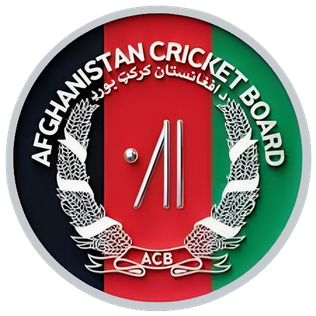
The Afghanistan Cricket Board is the official governing body of cricket in Afghanistan. It is Afghanistan's representative at the International Cricket Council (ICC) and was an associate member of ICC from June 2013 until becoming a full member in June 2017. Before that it was an affiliate member and has been a member of that body since 2001. It is also a member of the Asian Cricket Council.
The mass media in Afghanistan is monitored by the Ministry of Information and Culture (MoIC), and includes broadcasting, digital and printing. It is mainly in Dari and Pashto, the official languages of the nation. It was reported in 2019 that Afghanistan had over 107 TV stations and 284 radio stations, including 100s of print media and over 1,800 online media outlets. After the return of the Islamic Emirate of Afghanistan (IEA) in 2021, there was a concern that the mass media will significantly decrease in the country. The number of digital media outlets is steadily increasing with the help of Facebook, Instagram, TikTok, Twitter, YouTube, and other such online platforms. IEA's spokesman Zabihullah Mujahid suggested that the media should be in line with Sharia and national interests.

Nancy Hatch Dupree was an American historian whose work primarily focused on the history of modern Afghanistan. She was the director of the Afghanistan Center at Kabul University and author of five books that she compiled while studying the history of Afghanistan from 1962 until the late 1970s, writing about tourism and history of Bamyan, Kabul, Kandahar, Herat, Mazar-i-Sharif and so on. She was fondly called the "grandmother of Afghanistan", having spent more of her life there or with Afghans abroad.
The International Assistance Mission (IAM) is the longest continually serving non-profit organisation in Afghanistan. They are a well-respected NGO working to improve lives and build local capacity in health, development and education. They are a partnership between the people of Afghanistan and international Christian volunteers, who have been working together since 1966. IAM is registered in Geneva, Switzerland, and is the longest continuously serving NGO in Afghanistan, and only works in Afghanistan.
Edward Zellem is a retired U.S. Navy captain and the 12-time award-winning author of 5 books. He is known for his work inside Afghanistan's Presidential Palace and for authoring three bilingual collections of Afghan Proverbs: Zarbul Masalha: 151 Afghan Dari Proverbs, a book for children entitled Afghan Proverbs Illustrated, and a companion book of Pashto proverbs entitled Mataluna: 151 Afghan Pashto Proverbs. Zellem wrote the books to "show how Afghan proverbs demonstrate our common humanity and the humanity of Afghans, and to share the proverbs' lyricism, richness and deep meanings with the rest of the world". He is a member of the International Association of Paremiology (AIP-IAP), which is based in Tavira, Portugal. It is a nonprofit cultural institution dedicated to the international scientific study of proverbs, and is the only association of its type in the world. He also is an active professional scuba diving instructor with the Professional Association of Diving Instructors (PADI), and holds the PADI rating of Master Scuba Diver Trainer (MSDT).

Across Afghanistan, proverbs are a valued part of speaking, both publicly and in conversations. Afghans "use proverbs in their daily conversations far more than Westerners do, and with greater effect". The most extensive proverb collections in Afghan languages are in Pashto and Dari, the two official languages in Afghanistan.

Afghan literature or literature of Afghanistan refers to the literature produced in the Islamic Emirate of Afghanistan. Influenced by Central and South Asian literature, it is predominantly written in two native and official languages of Afghanistan, Dari and Pashto. Some regional languages such as Uzbek, Turkmen, Balochi, and Pashayi also appears in Afghan literature. While Afghanistan is a multilingual country, these languages are generally used as oral compositions and written texts by the Afghan writers and in Afghan curriculum. Its literature is highly influenced by Persian and Arabic literature in addition to Central and South Asia.
An Afghan personal name consists of a given name and sometimes a surname at the end. Personal names are generally not divided into first and family names; a single name is recognized as a full personal name, and the addition of further components – such as additional given names, regional, or ethnic family/clan names or patronymics – is often a matter of parents' choice. This structure is shared amongst the different ethnicities of Afghanistan and people of Khyber Pakhtunkhwa.

